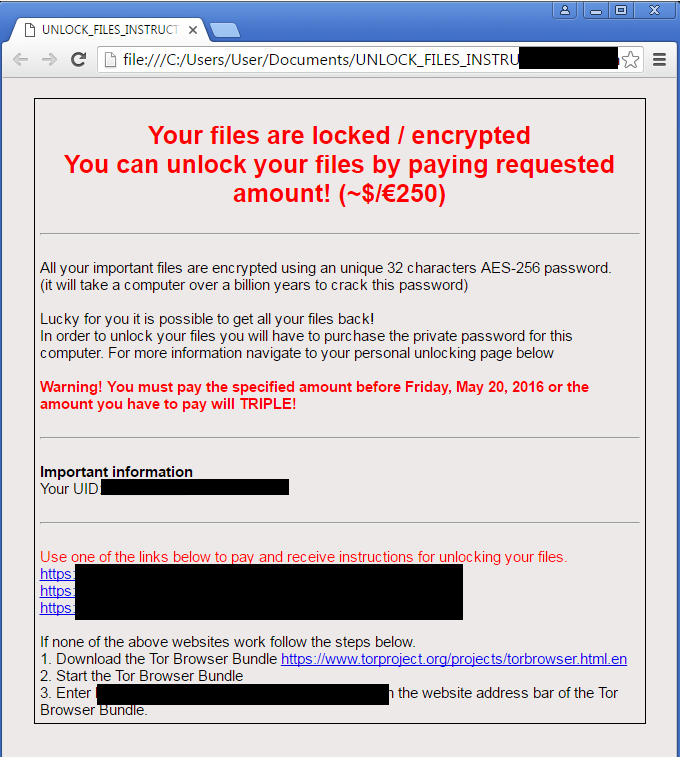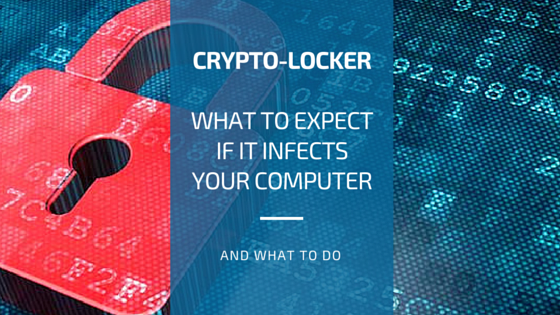
Each file will then be encrypted and changed to the. The ransomware specifically searches for certain file extensions to cause the most damage, typically ones crucial to productivity like.

The executable will be launched, and it will begin to scan the drives connected to your machine for files to encrypt. When the ransomware is first installed, it creates a randomly named executable file in the AppData folder. The malware is particularly troublesome because it uses AES-265 and RSA encryption method, which means the user has no choice but to purchase the private key to decrypt their data. The CryptoLocker ransomware targets all versions of Windows, including Windows 7, 8 and 10. By passing of as, say, your bank or a shipping company, and tricking you into clicking a link or attachment, the ransomware has infected your computer. Often, cyber-criminals forge email header information, making the email look legitimate. The malware is distributed via spam emails which contain infected attachments or links.

Unfortunately, the perpetrator behind the CryptoLocker ransomware hasn’t been so careless. Fortunately, the malware was poorly made, scrambling the data in the same way on every machine it affected free data recovery tools to quickly remove the malware was soon released. 90 days after infection, the data on the infected machine’s hard drive would be scrambled, and a ransom of $378 demanded, to be sent to an address in Panama.

Malware that encrypts your data and then demands a ransom to decrypt it isn’t a new thing by any means one of the earliest examples of malware written with the sole aim of making money was the AIDS Information Trojan of 1989. Unfortunately, data recovery can be next to impossible without the key. CryptoLocker is a file-encrypting ransomware, and when it infects your machine, it encrypts the contents of the hard drive using RSA-2048 key, before demanding payment to decrypt the data.


 0 kommentar(er)
0 kommentar(er)
